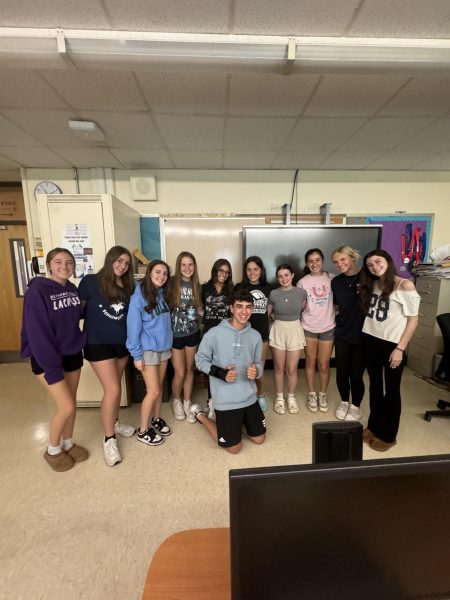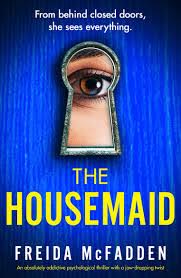The Golden Era of Rap and Hip-Hop – 1980-89
Before hip-hop was all about women, drugs, and money, it was about “street cred”— pride, rhymes, breakdancing, and style. Being a “B-Boy—a male who engages in the pursuit of hip-hop culture or adopts its styles—listening to DJ Red Alert every weekend waiting for the hottest tracks to drop, was everything to a significant number of urban American kids during this time. The 1980s was one of the most important decades in music history, not just because of the pop stars making hit records, but because of rap music’s injection into the musical bloodstream.
DJs, B-Boys, MCs, breakdancers, and graffiti artists were five pillars of hip-hop in the 1980s. Before iTunes and YouTube, kids of both genders used to sit with suitcase-sized boom boxes ready to jam to the impregnable rhymes of Run DMC, LL Cool J, Afrika Bambaataa, Marley Marl, Public Enemy, KRS-One, and Beastie Boys. Before “the whip” and “the dougie,” there were B-Boys breakdancing on cardboard sets or young kids “popping and locking” on street corners in New York City, creating their own styles. Walking the streets of the South Bronx in 1983, you’d likely see subway cars covered in graffiti, the illegal art of the streets. Instead of standing behind a turntable while a computer does all the work, DJs would cut and scratch vinyl records from their moms’ basements.
In the late 1970s, young men all over the five boroughs of New York (especially the Bronx) dug into their record crates, using two turntables to create percussive breaks and extend the most popular songs of that time. DJs became a force on the “wheels of steel” by picking up the Jamaican style of “toasting”—improvised talking or chanting, usually in a monotone melody, over a rhythm or beat. Improved sampling technology and drum machines were adopted to create new beats over these records. Amateur MCs became rappers, and the art of hip-hop exploded.
While raps heard on records were rarely improvised, free-style rapping became popular on the streets and at parties. Frequent battle rapper and famous hip-hop artist Kool Moe Dee compared freestyle rappers to jazz soloists, and for good reason: it takes skill to roll some devastating rhymes off the tongue with virtually no prep time. Kool Moe Dee vs. Busy Bee, Boogie Down Productions vs. Juice Crew, Kool Moe Dee vs. LL Cool J, and the “Roxanne Wars” were famous rap battles that went on during the 1980s. Some occurred at clubs or on the streets, but most were on “diss tracks.”
According to Bethpage High School computer teacher Mr. Zabell, “a lot of 1980s hip-hop sounds goofy today, but it was like opening a window on lives no one was seeing. Before it became gritty and violent, there was some very smart, very tight verse that is definitely worth revisiting. Listen to Public Enemy, De La Soul, Run DMC, Kool Moe Dee, and Boogie Down Productions, and you’ll see.” Mr. Zabell continued, “my favorite hip hop album from that time was The Blueprint of Hip Hop by KRS One/Boogie Down Productions. It was an album-length lesson that made me stop and think about the value of rap.”
With its fifteen minutes of straight-up rhymes from Wonder Mike, Big Bank Hank, and Master Gee, the 1979 hit “Rapper’s Delight” by The Sugarhill Gang was the first rap song to breakthrough and become a worldwide hit. After “Rapper’s Delight” was released, rap music continued to grow, giving rise to artists like Afrika Bambaataa, Grandmaster Flash and the Furious Five, and Kurtis Blow in the early 1980s. Bambaataa’s hit “Planet Rock” included an electrifying beat which was played in clubs across New York. Grandmaster Flash and the Furious Five’s “The Message” was the epitome of life on the street around that time—the hard, but truthful chorus line of “it’s like a jungle sometimes / it makes me wonder how I keep from going under” is considered one of the greatest lines in hip-hop history. This song broke away from what hip-hop was at the time—instead of following the DJ-centered fast beat, “The Message” was a slow beat with rap over it. Kurtis Blow was the first rapper to be signed to a major record label and perform overseason, and from 1979-1990, he released eleven albums. His smooth style, which yielded hits like “The Breaks,” “Basketball,” and “Christmas Rappin,” made Blow one of the godfathers of hip-hop.
Hip-hop was a growing force in other cities than just New York in the early 1980’s, and film was a valuable part of the growth. Though they were not all box office gems, motion pictures such as “Wild Style” (1983), “Breakin’” (1984), “Beat Street” (1984), and “Krush Groove” (1985) brought the art of rapping, breakdancing, graffiti and DJing to the big screen for the world to see. “Breakin’” earned a whopping $57 million worldwide, making it one of the most financially successful hip-hop movies ever.
Craig Rathsam, a Bethpage High School senior, is a 1980’s hip-hop buff himself: “The era of 1980’s hip-hop included some of the most talented lyricists of their time. Some of my favorite artists—Big Daddy Kane and Public Enemy—were a part of this era. This was truly the golden era of hip-hop, never to be duplicated.”
In 1984, hip-hop flowed into the cultural mainstream for the first time. One of the greatest rap groups of all-time would emerge from the parks of Hollis, Queens to change the style and sound of hip-hop forever. Joseph Simmons, Darryl McDaniels, and Jason Mizell became known as Run DMC. Joseph “Run” Simmons, who got his nickname from running his mouth so much, is considered one of the greatest MCs of all-time. Dubbed “DMC” for the letters in his name, or for being a “Devastating Mic Controller,” Darryl McDaniels’ distinctive voice, unforgettable gazelle glasses, and hard rhymes complemented “Run” greatly. Jason Mizell, known as “DJ Jam Master Jay”, brought his own style to the hip-hop game controlling the beats, cuts, and scratches behind the rhymes. Not only were they famous for their rhymes and records, but Run DMC’s style was the epitome of 80s hip-hop. All three members wore thick, blinging gold rope-chains around their necks while repping their signature shell toe Adidas sneakers. Run DMC reigned from 1984-1993, releasing six legendary albums in that time. They released their final album in the late 1990’s, but it was not successful. On October 30, 2002, Jam-Master Jay was shot and killed at his recording studio in Queens. Run and DMC announced the group was officially disbanding, and they retired making music as Run DMC.
N.W.A., the first major group to incorporate themes of violence and racial profiling and vulgar language in their music, released their hit album Straight Outta Compton in 1988. It turned some heads, to say the least. While the group was later credited with pioneering the growing art of gangsta rap, N.W.A referred to their music as “reality rap.” Their music affected urban America so much that Straight Outta Compton was one of the first albums—along with “2 Live Crew’s” As Nasty as They Wanna Be—to include a Parental Advisory label on the record. At the time, the label read: “WARNING: Moderate impact coarse language and/or themes.”
From 1984 and on, the most famous hip-hop music came from Run DMC, LL Cool J, Public Enemy, Eric B. & Rakim, Boogie Down Productions, Whodini, N.W.A., Fat Boys, Slick Rick, Beastie Boys, EPMD, Big Daddy Kane, Biz Markie, and many, many more. Rap in the 1980s was not about money, sex, women, or drugs like it is today, but about growing up in the streets, real-life events, and your style. Without the groundbreaking hip-hop artists around this time, there would be no Biggie Smalls, no Tupac, no Eminem, and no Drake.

Senior at Bethpage High School, Mikey Domagala is a third year journalism student who enjoys it very much. Mikey runs his self-created NBA Buzz Facebook...












Daddy Phil • Feb 5, 2023 at 5:29 pm
Golden era 1973 to 1986
1981bboy • Jun 1, 2024 at 6:14 pm
1979 to late early 1984 the old school. The real old school – Disco era.
Jason Robertson • Apr 18, 2022 at 3:03 pm
Golden Era for me was 83 to 93. I’m 46. KRS ONE for him was 81 to 91. I feel that it would be pre 95 for most hiphopers.
Theodore • Aug 11, 2018 at 10:01 am
Is tupac the golden era music
Jordan Jones • Oct 14, 2021 at 8:49 am
yyes